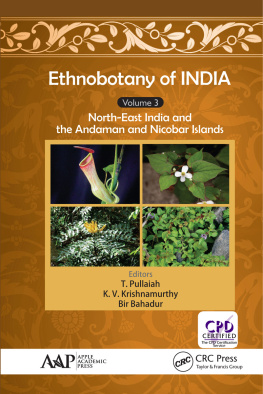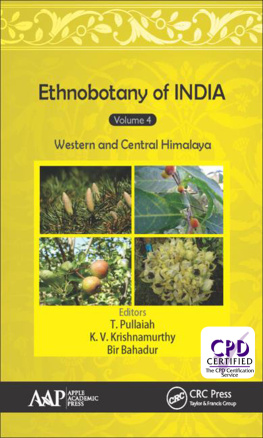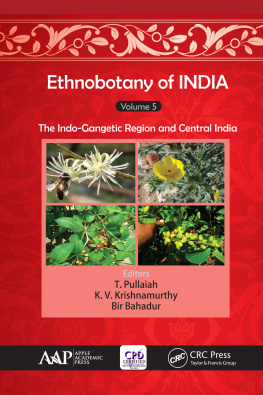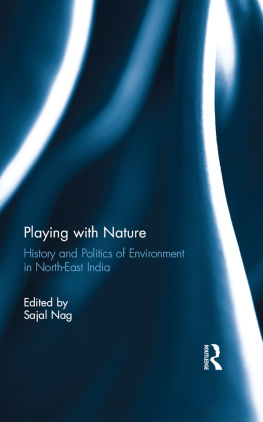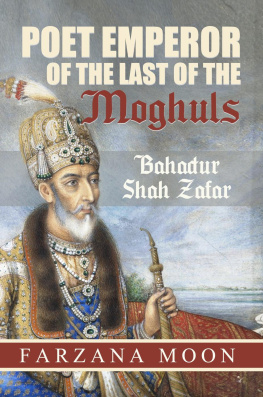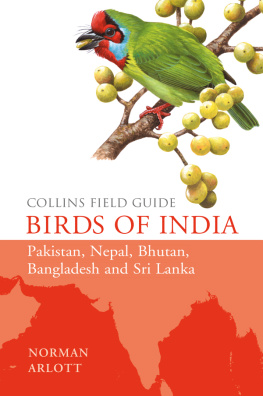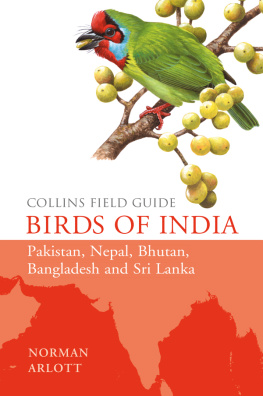Contents
We wish to express our grateful thanks to all the authors who have contributed their chapters. We thank them for their cooperation and erudition.
We also thank several colleagues for their help in many ways and for their suggestions from time to time during the evolution of this volume.
We wish to express our appreciation and help rendered by Ms. Sandra Jones Sickels and her staff at Apple Academic Press. Above all, their professionalism that made these books a reality is greatly appreciated.
We thank Mr. John Adams, Senior Research Fellow of Prof. K. V. Krishnamurthy, for his help in many ways.
We wish to express our grateful thanks to our respective family members for their cooperation.
We hope that this book will help our fellow teachers and researchers who enter the world of the fascinating subject of Ethnobotany in India with confidence.
Editors
Editors: T. Pullaiah, PhD, K. V. Krishnamurthy, PhD, and Bir Bahadur, PhD
Volume 1: Eastern Ghats and Deccan
Volume 2: Western Ghats and West Coast of Peninsular India Volume 3: North-East India and the Andaman and Nicobar Islands Volume 4: Western and Central Himalaya
Volume 5: The Indo-Gangetic Region and Central India
S. John Adams
Department of Pharmacognosy, R&D, The Himalaya Drug Company, Makali, Bangalore, India, E-mail:
Bir Bahadur
Department of Botany, Kakatiya University, Warangal-506009, India, E-mail:
Shuvasish Choudhury
Central Instrumentation Laboratory, Assam University, Silchar - 788011, India, E-mail:
S. Elavarasi
PG. & Research Department of Zoology, Holy Cross College (Autonomous), Tiruchirappalli, Tamilnadu, India
Bindu Gopalakrishnan
Department of Botany, Mithibai College, Vile Parle (W), Mumbai-56, E-mail:
K. V. Krishnamurthy
Consultant, R&D, Sami Labs Ltd, Peenya Industrial Area, Bangalore-560058, India, E-mail:
T. Pullaiah
Department of Botany, Sri Krishnadevaraya University, Anantapur-515001, India, E-mail:
Chowdhury Habibur Rahaman
Department of Botany, Visva-Bharati University, Santiniketan - 731235, West Bengal, India, E-mail:
Prabhat Kumar Rai
Department of Environmental Science, School of Earth Science and Natural Resource Management, Mizoram University, Aizawl-796004, Mizoram, India, E-mail:
G. Revathi
P.G. & Research Department of Zoology, Nehru Memorial College (Autonomous), Puthanampatti-621007, Tiruchirappalli, Tamilnadu, India
C. L. Ringmichon
K.V. Pendharkar College, Dept. of Botany, Dombivli (E), Thane Dist., Mumbai, Maharashtra, E-mail:
Bipul Saikia
Department of Botany, Chaiduar College, Gohpur - 784168, Sonitpur, Assam, E-mail:
Sujatha Samala
University College of Pharmaceutical Sciences, Kakatiya University, Warangal, Telangana-506009, India
K. Saravanan
P.G. & Research Department of Zoology, Nehru Memorial College (Autonomous), Puthanampatti-621007, Tiruchirappalli, Tamilnadu, India, E-mail:
Gautam Srivastava
Government Dental College and Hospital, Vijayawada, Andhra Pradesh, India
Robindra Teron
Department of Life Science and Bioinformatics, Assam University, Diphu Campus, Karbi Anglong, Diphu, Assam - 782462, E-mail:
Ciddi Veeresham
University College of Pharmaceutical Sciences, Kakatiya University, Warangal, Telangana-506009, India, E-mail:
1 Department of Botany, Sri Krishnadevaraya University, Anantapur515001, India, E-mail:
2 Consultant, R&D, Sami Labs ltd, Peenya Industrial Area, Bangalore560058, India, E-mail:
3 Department of Botany, Kakatiya University, Warangal506009, India, E-mail:
CONTENTS
This introductory chapter summarizes the various aspects discussed in the subsequent 12 chapters of this volume dedicated to the Ethnobotany of North-East India and Andaman and Nicobar Islands. The first section deals with a description of the location, physiography, geological features, vegetation/forest types and flora. The second section summarizes the ethnic diversity of this region, its origin and its cultural, social and linguistic aspects. The third section gives an introduction to the various utilitarian aspects of the study region focusing on attention of ethnoagriculture, ethnofood plants/food system, ethnomedicinal plants, plants of ethnoveterinary importance, plants which are otherwise useful, ethnobotany of Andaman and Nicobar Islands and documentation and exchanges of ethnobotanical knowledge. The last section of this chapter deals with introductions respectively to the quantitative aspects of ethnobotany and ethnobotany of turmeric, antidiabettic plants and plants involved in oral and dental problems. This introduction to all these 12 chapters also emphasizes the type of future attention that needs to be focused on the various topics covered in these chapters.
The Indian subcontinent consists of Himalayan Mountains girdling the northern border, the more or flat Indogangetic plains in the middle, the uplands and plateaus of peninsular India and the narrow coasted plains along the seaboards. Each of these regions is structurally and lithographically contrasted and geomorphically distinct with different geoevolutionary histories (Valdiya, 2010). The Himalayan Mountain with its northwest, north and northeast parts isolated the Indian sub-continent from the rest of Eurasia. It is a 2,400 Km long and 300 to 400 Km wide mountain. It comprises the Kirthar and the Sulaiman mountain chains in the west, the main Himalaya in the center, and Patkai-Naga-Kachin-Arakan Yoma arcuate chains (of about 1,300 km long) of hills in the east. It embodies four physiographically contrasted terranes: the Siwalik, the Himachal (Lesser Himalaya), the Himadri (Greater Himalaya) and the Tethys Himalayas. The Siwalik part abruptly rises above the flat Indogangetic plains and is of 250 to 800 m height and forms the southern front of the Himalayas. North of the Siwalik is the outer Lesser Himalaya which consists of the Pir PanjalDhauladhar-Mussoorie-Nanital-Mahabharat Ranges; it is generally more than 2,000 m high. North of these in the central sector (Kumaun and Nepal) is the 6002,000 m high middle lesser Himalayas. The Himadri or Greater Himalayas is Perennially snow-capped and extremely rugged (3,000 to more than 8,000 m in height). The most important Himalayan peaks are Nanga Parbat, Nun-Kun, Kedarnath, Badrinath, Nanda Devi, Doulagiri, Sagarmath or Everest, Kanchajangha and Namcha barwa. The Tethyys Himalaya lies beyond the Himadri. It is a cold desert bereft of vegetation on the whole. The Himalayan region ends up against the zone of collision of India with Asia. This is a 50-60 Km wide zone and is of 3,600 to 5,000 above mean sea level. North of this is the uplifted Tibet plateau.
As already stated the northeast Himalayas consists of Patkai-NagaKachin-Arakan Yoma arcuate chains of hills or the Indo-Myanmarese Range and the Arunachal Himalayan Ranges truncated by the LohitMishmi Ranges. The Lohit terrane extends south-southeast into Myanmar, embracing the Malaysian province. Some peaks of the Patkai and Naga ranges are more than 4,000 m high; mount Victoria in Chin hills is 3,201 m high, while Mount Padaung in the Arakan Yoma is 1,3201 m high. The spectacular feature of the north-east Himalayas is the syntaxial knee-bend that extends southwards up to the Bay of Bengal and continues further south for another 1,700 km under water embracing in its sweep the island arc of Andaman and Nicobar. The Mishmi bends southwards in northern Myanmar, forming the 1,700 km long China, Myanmar border ranges. These ranges comprise the Kachin mountains in the north, the Shan Massif in the Middle and the Tenasserim Range in the south. The last one continues into the Malaysian Peninsula. The average elevation of these border ranges is 4,000 m.

